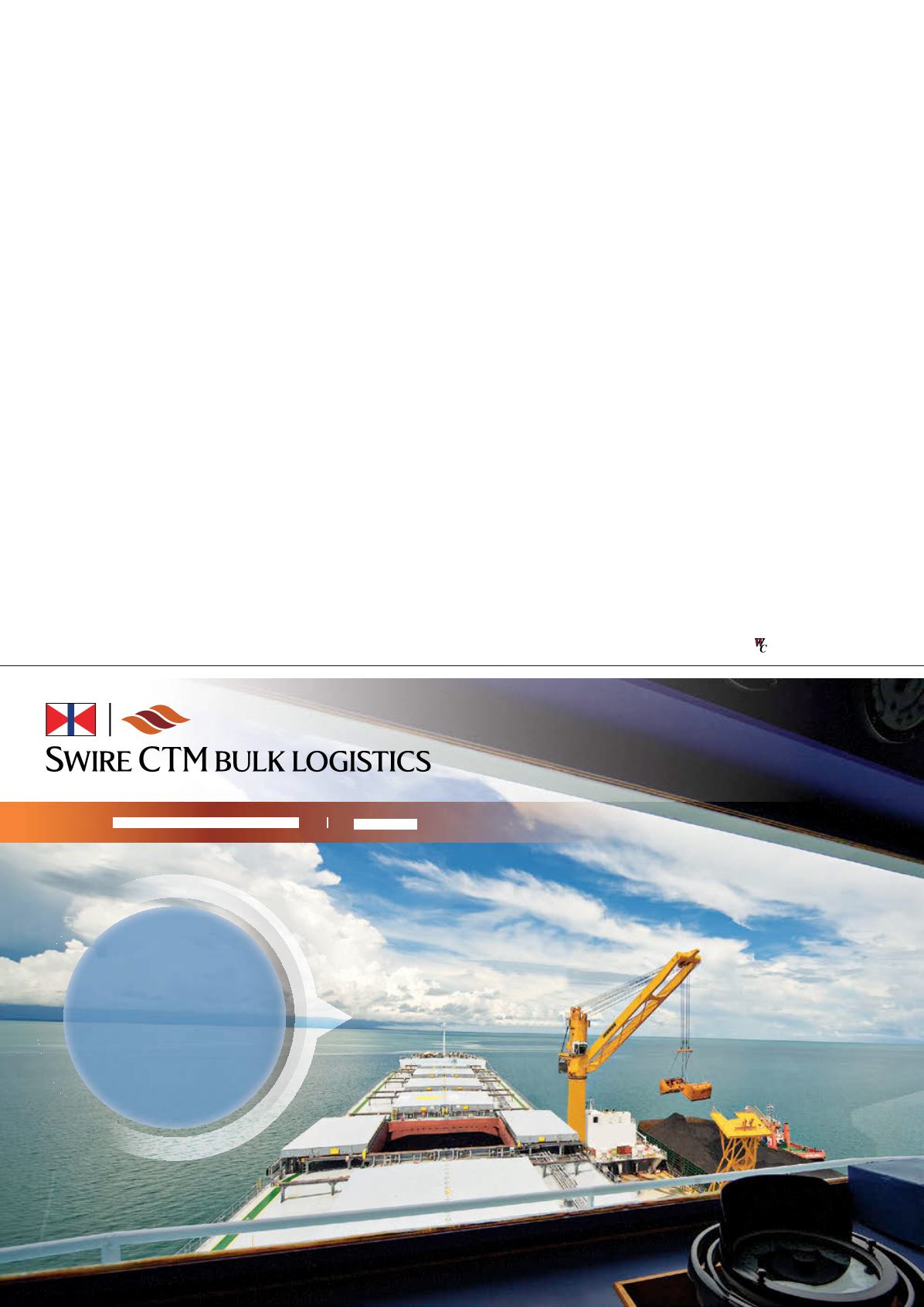
Australia, the priority is to
develop geological storage
opportunities.”
Brighter outlook
In its March 2016 quarterly report,
Australia’s industry department
predicted a brighter future ahead for the
nation’s resource and energy sector, with
total exports expected to reach
AUS$208 billion by fiscal 2021 compared
to AUS$160 billion in fiscal 2016.
Although metallurgical coal prices
are seen falling to an average of
US$83/t in 2016, down 19% on the
previous year, the department said
prices would start rising from 2018 by
around 1% a year to average US$80/t in
2021. This reflected increased demand
from emerging economies, such as
India, which is expected to overtake
Japan as the world’s largest importer
within two years.
Australia’s exports of metallurgical
coal are expected to grow by an average
1.6% a year to reach 200 million t by
2021, growing the nation’s share of
world trade at the expense of declining
North American production.
Australia is also projected to
become the world’s largest thermal
coal exporter “over the medium term”
as lower prices, increased domestic
usage and infrastructure constraints
limit output from rival suppliers. The
industry department forecasts
Australian thermal coal exports will
“increase marginally” to 216 million t
by fiscal 2021, with earnings of around
AUS$14 billion.
Benchmark thermal coal prices are
also expected to increase in line with
growing demand from India and
Southeast Asia, offsetting falling demand
from China and the OECD. The
department said the annual contract
price would decline from US$59/t in the
Japanese fiscal year 2016 to around
US$54 in 2018, before recovering slightly
to US$56/t in 2021.
The QRC’s Roche was bullish on the
outlook, saying: “While consumption
of thermal coal is expected to decline
in Europe, North America and perhaps
China, that will be more than offset by
increased demand for coal in the rest of
Asia and in Africa. There are around
370 GW of new coal-fired generation
capacity under construction or
approved in non-OECD countries,
which is almost equal to the
investment across all technologies in
the OECD.”
Roche concluded with a positive
outlook for Queensland’s metallurgical
coal sector: “Exports are forecast to
increase over the medium term,
supported primarily by an increase in
imports from emerging economies, such
as India, together with continuing strong
demand from traditional customers,
such as Japan, Korea and Taiwan.”
Stanmore Coal’s Jorss agreed with
the positive outlook for metallurgical
coal, saying recent price rises reflected
the supply-demand situation drawing
closer to a balance. “Coking coal is
essentially a scarce resource, which is
being depleted at a rate of knots,
around a billion tonnes a year coming
out of the ground to make steel. When
the supply-demand situation switches,
there will be a shortage of projects and
the lead times are getting longer and
longer with regulatory constraints,” he
said.“The seeds of the next upswing are
being sown as we speak.”
Contact :
WWW . SW I R E C T M B L . C OM
MISSIONS
To provide reliable
customised and cost-e ective
dry-bulk seaborne supply
chain services aimed at
bridging the gap between
Supplier and
Industry


